Action and politics in ’70s thrillers
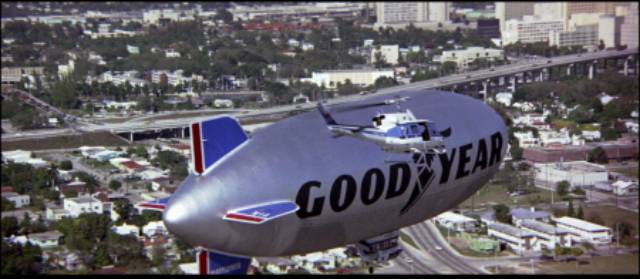
“Thriller” is one of those vague, amorphous categories, not a clearly defined genre in itself, but rather an approach which can encompass many different elements – romance, suspense, violence, social and political commentary, comedy and tragedy, even fantasy, science fiction and surrealism. As a cinematic form, it’s almost as old as film itself: Cecil Hepworth made Rescued By Rover, in which a family’s dog outwits kidnappers of a baby, in 1905, and what we now recognize as key elements of the thriller were laid down by Louis Feuillade in his serials of the 1910s and Fritz Lang in his Feuillade-influenced serials of the ’20s. Alfred Hitchcock built his British career in the ’30s on a series of movies which combined comedy and romance with danger and suspense in a playful way.
Towards the end of the ’30s, with war apparently inevitable, real-world considerations began to come to the fore – civilian and military heroes were set to root out Nazi and Japanese agents determined to destroy democracy. During and after the war, film noir began to dominate and define the form: protagonists inhabited a darker world where unseen forces were determined to destroy those for whom war had seemingly ended the possibility of security and happiness. These movies were permeated with paranoia, reflecting the political derangement of a feverish anti-communism.
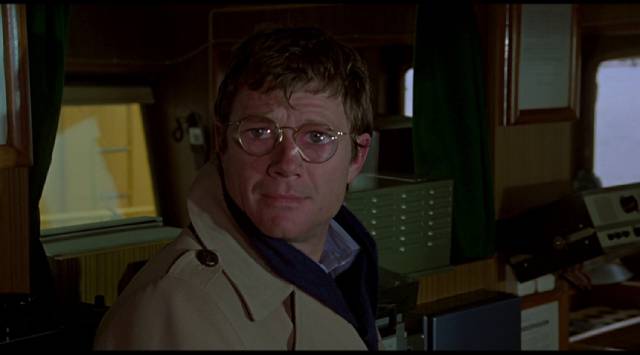
By the early ’60s, with the cold war dragging on as the status quo, there was a drift back towards the thriller’s origins in silent cinema – James Bond, working for British Intelligence, took on criminal supervillains who resembled Fantomas and Dr. Mabuse, figures generally without national affiliation who were bent on world domination for financial rather than political reasons. But the turbulent social and political upheavals of the decade were at odds with these power fantasies and once again reality began to seep into the mix with fact-based movies like Costa-Gavras’s critical and commercial hit Z (1969) and the other films he made in the ’70s which viewed contemporary politics and recent history through the lens of the thriller.
This incorporation of political reality gave rise to the paranoid thrillers of the early to mid-’70s, which were a way of expressing the confusion and insecurity people felt as politics collapsed very publicly under the weight of corruption and dishonesty. More often than not, the protagonists’ enemies turned out to be their own colleagues and the government they worked for. Simultaneously, reality itself began to resemble a paranoid thriller as violent groups began to set off bombs, hijack planes and commit kidnappings and assassinations in numerous countries – the Red Brigades in Italy, Baader-Meinhof in Germany, the IRA in England, even Le Front de libération du Québec in Canada. It was inevitable that this political reality would in turn be absorbed into popular entertainment, with big budget, prestigious movies looking for ways to transform real-life horrors into stories which might make some sense of the apparent chaos – from Martin Ritt’s The Spy Who Came in from the Cold and Sidney J. Furie’s The Ipcress File (both 1965) to Alan Pakula’s The Parallax View (1974) and Sidney Pollack’s Three Days of the Condor (1975) among many others. Of course, the movies being what they are, the results were mixed to say the least.
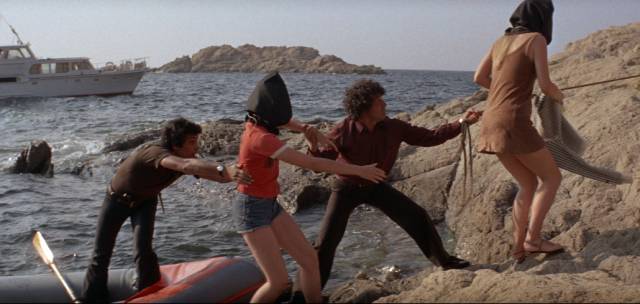
Rosebud (Otto Preminger, 1975)
When I was in Los Angeles in December 1981 to interview David Lynch and his collaborators about the making of Eraserhead, I bought a book called Soon to Be a Major Motion Picture by Theodore Gershuny. This was a fascinating account of the making of Otto Preminger’s Rosebud (1975), the filmmaker’s second-last feature. (His five-decade career ended four years later with the Graham Greene adaptation The Human Factor [1979], which somewhat redeemed his tattered reputation after a string of uneven, frequently reviled movies like Hurry Sundown [1967] and Skidoo [1968].) Gershuny’s book belongs to a sub-genre which takes a harder look at the movie business than the more common adulatory “making of” books aimed at fans – books like Stephen Farber’s Outrageous Conduct about death on the set of John Landis’s episode of Twilight Zone: The Movie and Julie Salamon’s The Devil’s Candy about the creative and commercial disaster of Brian De Palma’s adaptation of Tom Wolfe’s Bonfire of the Vanities. I hadn’t seen Preminger’s movie, which didn’t get much of a release, so my impressions came entirely from Gershuny’s fly-on-the-wall account of what seemed misconceived from the start and ground on through a troubled production heading towards some of the worst reviews of the director’s career.
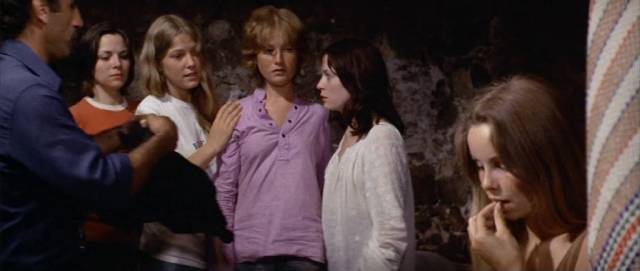
More than four decades later, what I recalled most clearly from the book was its portrait of Preminger as an abrasive, even abusive figure who was hard on cast and crew and intolerant of disagreement even as it became clearer that the movie he was making simply wasn’t coming to life – that, and a general feeling among many involved (including Gershuny himself) that a young Isabelle Huppert, early in her career, wasn’t much of an actress.
Now, forty-one years later, I’ve finally seen the movie, having discovered that Kino Lorber had actually released it two years ago on Blu-ray. It’s always a bit disorienting to see something for the first time when you’ve long had a preconception which acts as a kind of filter through which you watch – are you really seeing the movie clearly, or are you imposing something on it? Is it actually as bad as the critics at the time said it was? Vincent Canby in the New York Times called it “a suspense melodrama of such ineptitude, lethargy and loose ends that only someone with his arm being twisted would take credit for it”.
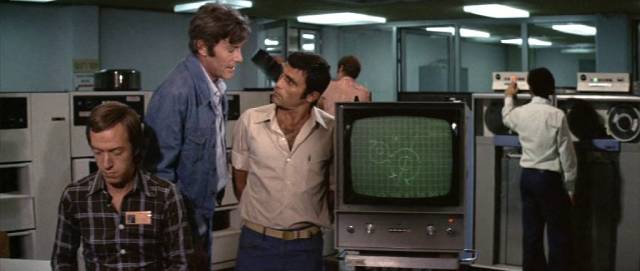
There are numerous problems with Rosebud, perhaps beginning with that title, which so obviously refers for no discernible reason to Orson Welles’s Citizen Kane (1941), a film to which it bears no connection. In Preminger’s movie, “Rosebud” is the name of a yacht, and so a signifier of wealth and privilege, but beyond that… One character does comment on the name and wonders what it means, and another replies “I’m not sure. I think it has something to do with a movie”, a line which invites a sarcastic response from the reviewer about Preminger’s work here having “something to do with a movie”, though it’s not clear what that might be.
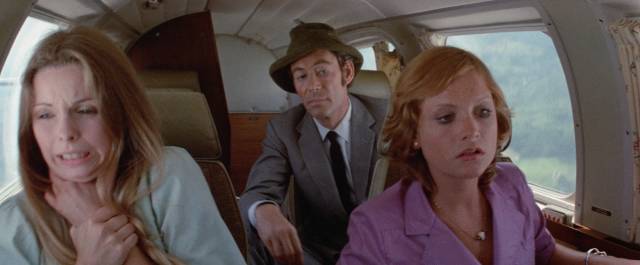
That line is just one indicator of the core problem: the script by the director’s son Erik Lee Preminger, with additional uncredited dialogue from Marjorie Kellog, who had written Preminger’s Tell Me That You Love Me, Junie Moon (1970) a few years earlier. Adapted from a novel by French journalist Paul Bonnecarrère and Joan Hemingway, it attempts to make a thriller out of contemporary issues, but makes those issues vague and generic. A few years before production, Palestinian terrorists had massacred Israeli athletes at the Munich Olympics; plane hijackings were fairly common; various political factions in Europe (particularly Germany, Italy and Spain) were committing kidnappings, assassinations and bombings. It was a complicated and violent time, but the reading of events provided by Rosebud is superficial, stripping away politics and ideology – what the Palestinians want in the movie remains oddly vague, disconnected from the reality of the situation in the Middle East.
A group of Palestinians kidnap the daughters of five wealthy families from the yacht “Rosebud”. The young women come from France, Greece, Germany, England and the U.S., making it an international incident. As demands are made via tapes recorded by the hostages, CIA operative Larry Martin, whose globe-trotting cover is as a Newsweek correspondent, teams up with Israeli agent Yafet Hemlekh (Cliff Gorman) to rescue the hostages before the wealthy fathers can force their governments to concede to the terrorists’ demands.
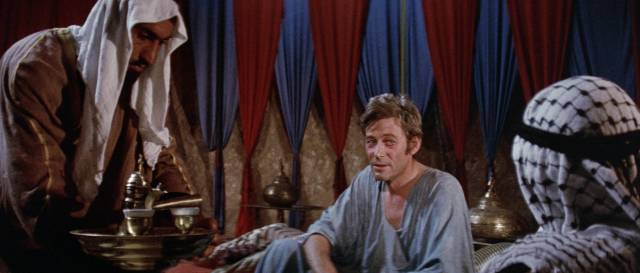
There’s a lot of rushing from country to country with each stop mostly consisting of sluggish scenes of expositional dialogue, the travelogue scenery barely providing any visual distraction. The cast is impressive, though no one has much to do – with Peter O’Toole seemingly lost as the CIA man at the centre of it all, giving a bemused, twitchy performance that suggests he’d like it all to be over as soon as possible. As if to decisively disconnect the movie from the real world, the trail eventually leads to Edward Sloat (Richard Attenborough), an English convert to Islam who is behind it all and has some big plan to spread terrorism around the world to bring on an age of Islamic dominance, or something. Obscuring all the actual issues percolating in the Middle East, the movie ends up with a rather lame Bond-style villain.
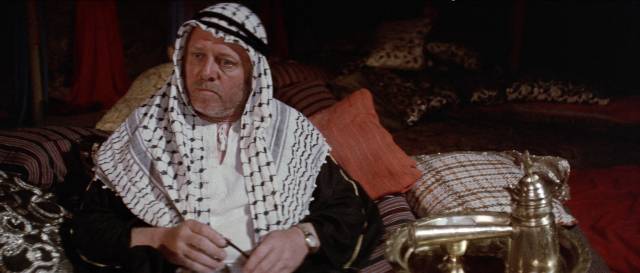
Although Rosebud does display Preminger’s technical skills – it has the look of a well-mounted production, professionally shot by cinematographer Denys Coop (and camera operator James Devis, whom I met on the set of Dune, on which he was in charge of one of the supplementary units) – it lacks the often seemingly misguided engagement which makes some of the director’s lesser films (like Hurry Sundown [1967]) perversely entertaining, and certainly never arrives at the tasteless madness of a Skidoo (1968). It lacks the cheap thrills of a generic thriller, but also fails to address the real political situation supposedly underlying its plot, leaving the viewer wondering why Preminger even bothered.
Rosebud looks fine on Kino’s Blu-ray, mastered from a 2K scan. I haven’t listened to Daniel Kremer’s commentary.
*
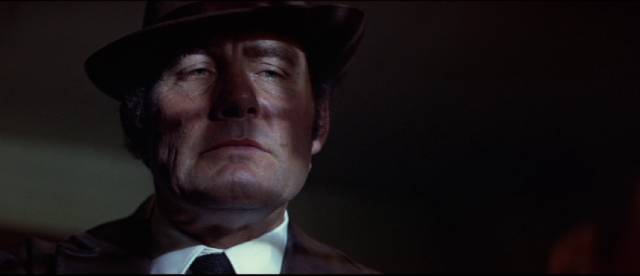
Black Sunday (John Frankenheimer, 1976)
In contrast to Rosebud, John Frankenheimer’s Black Sunday (made just a year later) does address the real political situation in the Middle East, using it as a motivating backdrop to a well-crafted thriller in which the action illuminates the various psychological traumas of characters on both sides of the conflict. Adapted from Thomas Harris’s first novel, the script is by Ernest Lehman, who had written North by Northwest (1959) for Hitchcock, and Kenneth Ross, who had recently adapted Frederick Forsyth’s similarly structured The Day of the Jackal (1973) for Fred Zinneman, with additional contributions from Ivan Moffat, whose previous work seems less obviously applicable to this project – he had written movies like Giant (1956) for George Stevens and Tender Is the Night (1962) for Henry King, the closest to a thriller being Anthony Mann’s wartime espionage story The Heroes of Telemark (1965). While Frankenheimer could be considered somewhat comparable to Preminger as a craftsman, the most obvious difference between the two films is the quality of their respective scripts. Lehman, Ross and Moffat know how to tell a story.
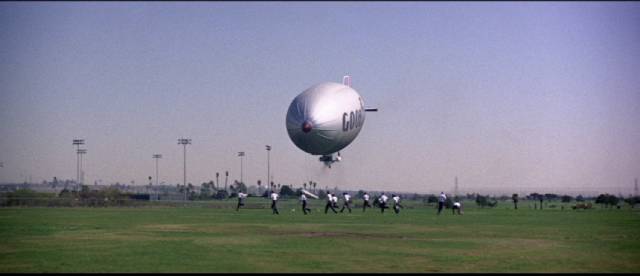
As suggested, in broad terms that story is structured like The Day of the Jackal: a dogged agent discovers by chance that someone is planning a terrorist act and must figure out not only who the perpetrators are, but the nature and location of the planned operation; cutting back and forth between the agent and his target, the narrative becomes a cat-and-mouse chase in which, paradoxically, the audience becomes invested in the actions of both sides – the tension comes from a perverse desire to see the terrorist operation come to a climax, while also wanting the protagonist to prevent its fulfillment. This draws on the process of identification which is capable of placing the viewer in a morally compromised position; in watching the meticulous planning of a heist, we side with the criminals … or, more problematically, in following the methodical preparations of a serial killer we might become aligned with their actions rather than the situation of the intended victim. Here, we are absorbed by a plan to mass murder a crowd of thousands.
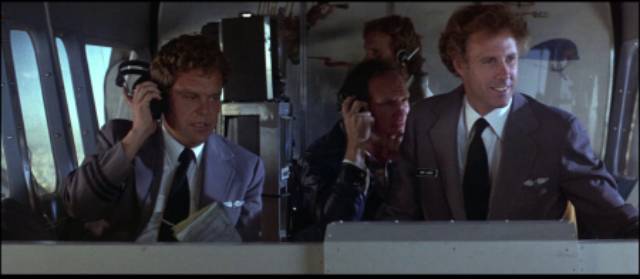
In Black Sunday, the “hero” is an Israeli officer named Kabakov (Robert Shaw), whom we first meet during a night raid on a compound where a Palestinian faction is planning a major operation. Although Kabakov’s men kill most of the people they find, he spares a woman he finds in a shower, a hesitation which has major ramifications as the story unfolds. This woman, Dahlia (Marthe Keller), is the daughter of German and Palestinian parents who has aligned herself with the Palestinian cause and is a key figure in the unfolding operation. Unfortunately, just before the raid, she had recorded a statement to be released to the press in the near future which provides some clues about the operation, but no specific details.
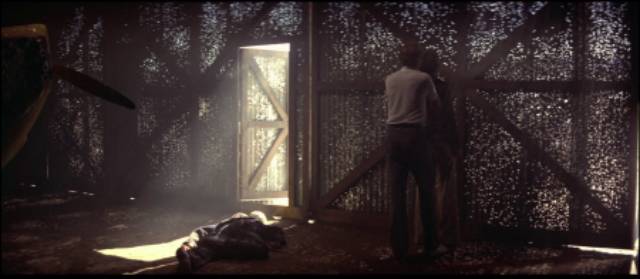
The plan, it turns out, is to use the Goodyear blimp as a bomb to attack the Super Bowl in Miami, a crowd of eighty-thousand which will include the President himself. The idea is to bring the Middle East conflict home to the U.S. after years of American support for Israel’s oppression of Palestinians. The key to the plan is blimp pilot Lander (Bruce Dern), a former P.O.W. in Vietnam, psychologically damaged by years of imprisonment and torture and disgraced from having been forced to make a public confession of his war crimes against the Vietnamese people. Feeling betrayed by his country, he wants to inflict pain on a large scale and is manipulated by Dahlia to further her own purposes.
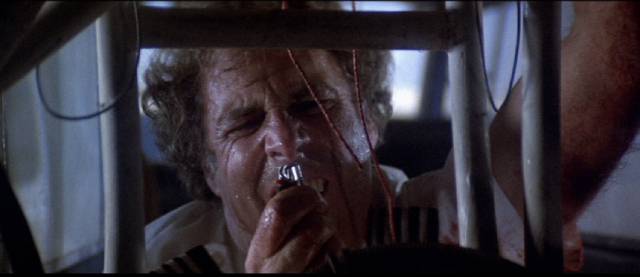
One of the film’s most distinctively ’70s characteristics is that all three protagonists are damaged people operating in a context not of their own making, trapped in a situation which will inevitably only perpetuate the conflict which has already caused them so much pain. There are no heroes, no invincible characters without moral doubts – Kabakov recognizes that what he does to fight his state’s enemies merely breeds new enemies – and the movie ends almost anticlimactically, immediate disaster averted but the motivating situation unchanged. For a large-scale action movie, Black Sunday is a bit of a downer because it draws closely on an intractable real-world situation in a story inhabited by well-drawn characters whom we can empathize with even as they do bad things. This kind of movie would all-but disappear with the dawn of blockbuster entertainment in the mid-’70s and the rise of stars like Sylvester Stallone, Chuck Norris and Arnold Schwarzenegger who would always be on the side of right, even when they were doing nasty things. The moral ambiguity of Frankenheimer’s film is too uncomfortable for the multiplex.
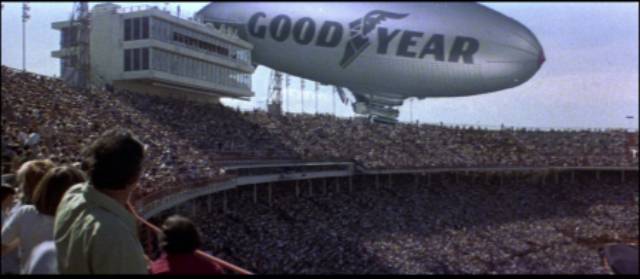
Black Sunday shares another characteristic with The Day of the Jackal: Frankenheimer, like Zinneman, grounds the story with a methodical style and a fine attention to detail. John A. Alonzo’s cinematography, supporting a masterful piece of visual storytelling, is impressive without being flashy or calling attention to itself even when executing some remarkable moves. At one point, the car being driven by Dahlia, towing the trailer with the bomb, is caught in a long-shot driving through quiet streets; the camera pan becomes a crane shot which crosses the stadium boundary to pick up the crowd, the cheerleaders and the game in progress in a single, effortlessly choreographed move. Even the final assault on the stadium by the blimp, something which today would be created with digital effects, is given visceral excitement through old-school craft, a combination of the real blimp and stadium, miniatures and optical effects seamlessly woven together by editor Tom Rolf.
The film looks fine on Arrow’s Blu-ray, with a Josh Nelson commentary, a brief visual essay about the production and its place among ’70s thrillers involving terrorism, and a one-hour documentary about Frankenheimer from 2003.
*
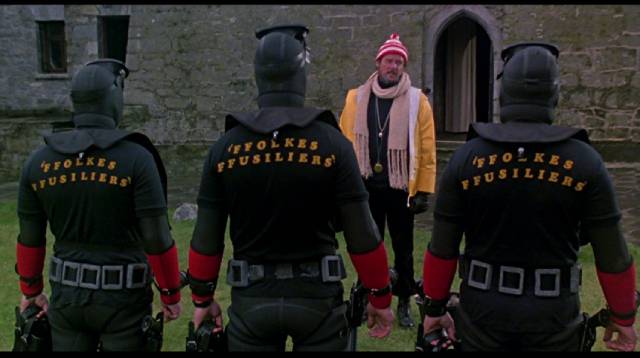
North Sea Hijack (Andrew V. McLaglen, 1980)
Perhaps the key model for what mainstream thrillers became in the 1980s was Dirty Harry (1971) – if you can make the antagonist irredeemably bad, then whatever the protagonist does can be justified. The cop who rebels against the constraints of the system because there’s no other way of fighting the enemies of society became a quintessential figure during the Reagan years – Stallone’s Deke DaSilva in Nighthawks (1981) evolving into the more likeable John McClane in John McTiernan’s Die Hard (1982). The latter also cemented a key trope of the genre: the bad guys proclaiming a principled political motivation for their terrorist acts are eventually revealed to be in it only for the money. On an ideological level, this not only simplifies things for the audience in narrative terms, it also helps to discredit real-world actors who stand in opposition to the political status quo by reducing them to the equivalent of, once again, Bond villains.
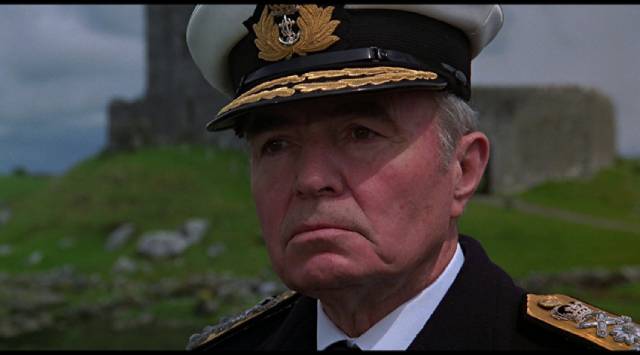
This pattern shows up already at the beginning of the decade in Andrew V. McLaglen’s North Sea Hijack aka ffolkes (1980). Written by comedy-specialist Jack Davies, whose career began in 1934, there are already signs of self-mockery here signalling the genre’s slide towards something which connects with the real world only tangentially. Halfway through his run as James Bond, Roger Moore seems to relish the idea of poking fun at the smarmy image he had nurtured as the heroic British agent. Here, he’s ffolkes, an ex-military man who runs his own private mercenary force out of a Scottish castle, training rugged men in seaborn operations and underwater demolition. He guzzles scotch straight out of the bottle, loves cats, relaxes by doing cross-stitch in tense situations, and despises women as much as he relishes the company of sweaty men. Whether intended or not, there’s an undertone of homoeroticism, something common to so many masculine adventures.
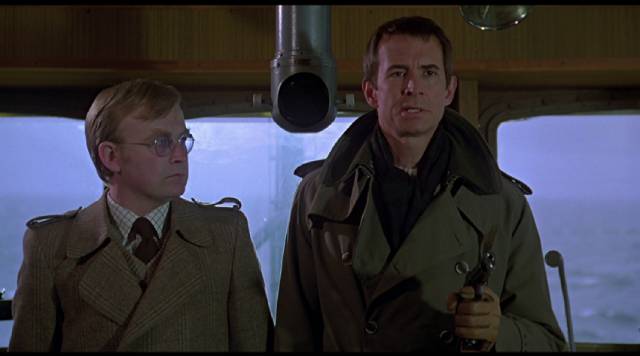
ffolkes receives a reluctant call from the Prime Minister (Faith Brook in a nod to the recently elected Margaret Thatcher) when a group of terrorists seize two oil rigs in the North Sea. The platforms have been rigged with explosives and there’s a tight deadline for meeting the terrorists’ demands – which unsurprisingly turn out to be purely monetary. ffolkes goes undercover as adjutant to Admiral Brinsden (James Mason) who is tasked with delivering the ransom, while his team use mini-subs to disarm the underwater explosives. In the process ffolkes butts heads with strong-willed Sanna (Lea Brodie), a professional woman whose qualifications and competence he is unwilling to acknowledge.
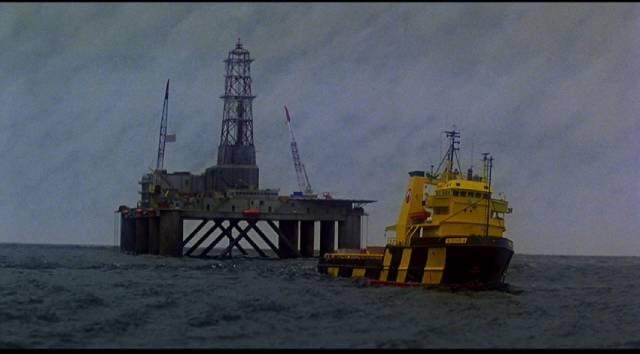
On board the seized oil rig, members of the crew work to subvert the terrorists, while internal conflicts begin to unravel the gang’s plans. The terrorists are led by Anthony Perkins as Kramer, with Michael Parks as Shulman, his demolition expert, both of whom ultimately prove to be no match for the insufferably self-satisfied ffolkes. McLaglen handles the action with uninspired efficiency and there’s some nice model work with the various ships and oil rigs. Despite raising the issue of the vulnerability of the North Sea oil industry and its importance to Britain’s economy, the film has no more interest in reality than the Bond movies, to which Moore returned the following year. If there was any thought of spinning this into a new series, it didn’t go anywhere at the time and, despite being released now on Blu-ray, the movie has largely been forgotten.
North Sea Hijack looks fine on the 88 Films disk, with about an hour of cast-and-crew interview featurettes.
Comments